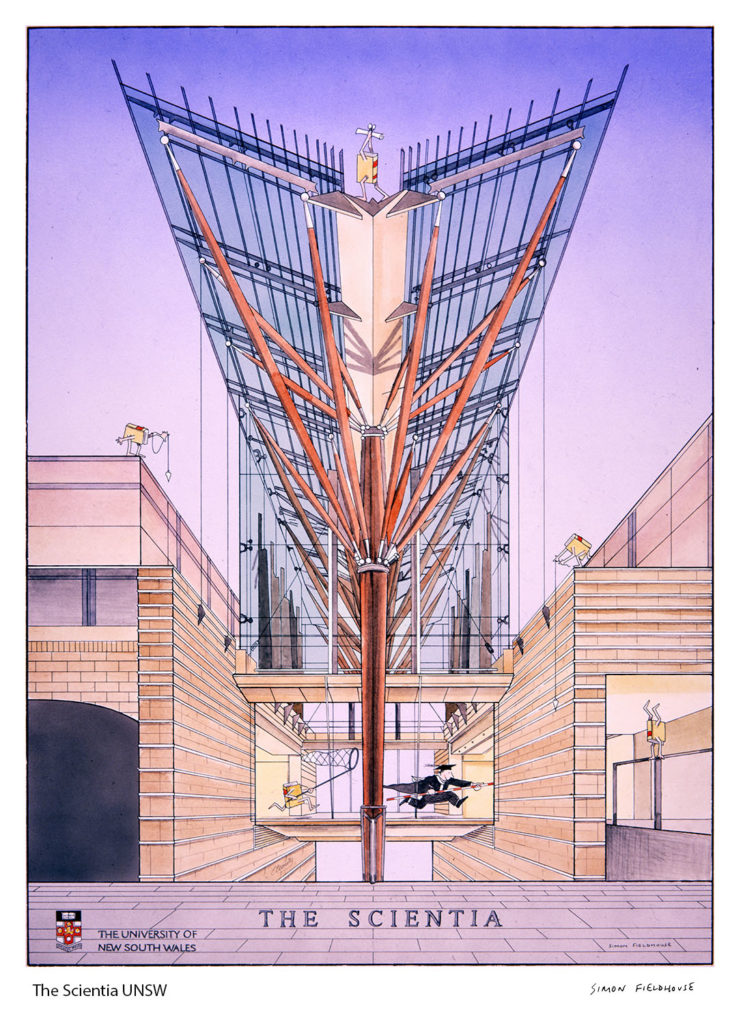
John Niland Scientia Building UNSW
The Architectural Marvel of Scientia Building at UNSW. The University of New South Wales (UNSW) in Sydney stands as a beacon of academic excellence, fostering innovation, research, and collaborative learning. At the heart of this prestigious institution lies the remarkable architectural gem, the Scientia Building. Designed by the world-renowned Australian architects, Johnson Pilton Walker (JPW), this building stands not only as a physical structure but also as a symbol of innovation, sustainability, and academic collaboration.
The unique design of the Scientia Building is a testament to the fusion of cutting-edge architecture and sustainable technology. Boasting an impressive array of environmentally friendly features, the building exemplifies the commitment to reducing its ecological footprint. Its striking facade, an interplay of glass and steel, is not just aesthetically appealing but also serves practical purposes, allowing natural light to permeate the interior spaces, reducing the need for artificial lighting and minimizing energy consumption.
Moreover, the building's unique design encourages collaboration and interaction among students and faculty members. The layout incorporates open spaces, amphitheaters, and informal gathering areas, fostering an environment that promotes interdisciplinary collaboration and innovation. The modern, flexible design of lecture halls and seminar rooms accommodates various teaching methods, embracing the diverse needs of different fields of study.
One of the standout features of the Scientia Building is its state-of-the-art sustainability initiatives. From its rooftop solar panels to its rainwater harvesting systems, the building actively harnesses natural resources for energy and water, significantly reducing its carbon footprint. This commitment to sustainability aligns with the university's dedication to environmental stewardship and serves as an educational tool, inspiring students and visitors alike to embrace eco-friendly practices.
The building's innovative technology extends to its functionality. Equipped with cutting-edge audiovisual systems, it enables immersive learning experiences, ensuring that students have access to the latest educational tools. Additionally, the incorporation of smart building management systems optimizes energy efficiency and maintains a comfortable and productive environment for its occupants.
Beyond its architectural brilliance, the Scientia Building stands as a hub for academic and cultural events. Its multipurpose spaces host a myriad of activities, including seminars, conferences, exhibitions, and performances. This versatility cements the building's significance as a vibrant center for intellectual exchange and community engagement.
The impact of the Scientia Building goes beyond its physical presence. It embodies UNSW's commitment to academic excellence, sustainability, and the nurturing of a collaborative and innovative community. It stands as an icon of architectural innovation and a living laboratory for sustainable practices.
In conclusion, the Scientia Building at UNSW stands as a testament to the harmonious blend of architectural ingenuity, sustainability, and academic purpose. Its significance goes beyond being a mere structure; it represents a commitment to excellence and innovation, providing an environment that fosters learning, research, and collaboration. As a symbol of forward-thinking design and functionality, the Scientia Building continues to inspire and shape the future of education and sustainable architectural practices.
John Niland's leadership at UNSW spanned over a pivotal period of growth and transformation for the university. He held the position of Vice-Chancellor from 1992 to 2002. During his tenure, he played a pivotal role in steering UNSW towards global recognition, fostering academic excellence, and driving innovation in various fields.
Under Niland's leadership, UNSW experienced a remarkable expansion in its research initiatives and academic programs. He emphasized the importance of interdisciplinary studies, encouraging collaborations across diverse departments and faculties. This approach facilitated the development of a comprehensive and diverse academic environment, leading to groundbreaking research and innovation.
Niland's vision for UNSW extended beyond academic pursuits. He was committed to enhancing the university's international reputation, fostering partnerships with other institutions globally, and attracting top-tier talent. His efforts contributed significantly to making UNSW a hub for international students and scholars, enriching the university's cultural diversity and academic dialogue.
Furthermore, John Niland was a strong advocate for advancing the university's infrastructure and facilities. He oversaw several major building projects during his tenure, enhancing the campus with state-of-the-art facilities, including the establishment of the iconic Scientia Building. His emphasis on creating a conducive environment for learning and research is reflected in these initiatives, contributing to the university's modern and innovative infrastructure.
Beyond his administrative role, Niland was also an esteemed academic in the field of economics. His scholarly contributions added to his reputation as a well-rounded academic leader. His background and expertise in economics provided a strong foundation for his strategic decision-making and policy development within the university.
Throughout his career, John Niland exemplified dedication to fostering academic excellence, research innovation, and international collaboration. His legacy at UNSW continues to shape the university's ethos, emphasizing the importance of academic quality, interdisciplinary studies, and global engagement.
While John Niland's tenure as Vice-Chancellor concluded in 2002, his impact and legacy continue to resonate within UNSW's academic and institutional framework, contributing to the university's ongoing success and recognition as a leading institution in Australia and on the global stage.